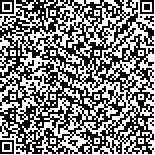| 引用本文: |
王思蒙,韩斐.耳穴疗法治疗抽动障碍的Meta分析[J].湖南中医药大学学报,2021,41(10):1594-1600[点击复制] |
|
| |
|
|
| 本文已被:浏览 3697次 下载 1868次 |
| 耳穴疗法治疗抽动障碍的Meta分析 |
| 王思蒙,韩斐 |
| (中国中医科学院广安门医院, 北京 100053) |
| 摘要: |
| 目的 评价耳穴疗法治疗抽动障碍(tic disorders,TD)的有效性及安全性,为临床使用耳穴疗法治疗TD提供依据。方法 检索中国知网、重庆维普期刊全文数据库、万方学术期刊全文数据库、中国生物医学文献数据库、PubMed数据库自建库以来至2020年12月31日发表的耳穴疗法治疗TD的随机对照试验研究,由两名研究者进行文献筛选,应用RevMan 5.3软件进行Meta分析。结果 最终共纳入35篇文献,2 807例患儿纳入本研究,治疗组1 448例,对照组1 359例。Meta分析有效率结果示RR=1.19,95% CI[1.15,1.23],Z=11.24,P<0.01;降低耶鲁综合抽动严重程度量表(YGTSS)总评分SMD=-1.00,95% CI[-1.29,-0.70],P<0.01;减少不良反应发生情况RR=0.23,95% CI[0.16,0.35],Z=7.04,P<0.01。结论 耳穴疗法联合常规疗法治疗TD有一定的疗效,在今后的临床治疗中可采用联合疗法提高疗效。但由于本次纳入研究质量不高,研究可能存在潜在偏倚,因此在今后的研究中仍需要多中心、大样本以及双盲的随机对照试验来验证。 |
| 关键词: 抽动障碍 耳穴 随机对照试验 Meta分析 |
| DOI:10.3969/j.issn.1674-070X.2021.10.021 |
| 投稿时间:2020-09-22 |
| 基金项目:中央级公益性科研院所基本科研业务费项目(ZZ13-024-5)。 |
|
| A Meta Analysis of Auricular Acupoint Therapy for Treating Tic Disorder |
| WANG Simeng,HAN Fei |
| (China Academy of Chinese Medical Sciences, Guang'anmen Hospital, Beijing, 100053) |
| Abstract: |
| Objective To investigate the effectiveness and safety of auricular therapy in treating patients with tic disorder (TD), and to provides the basis for treating TD with auricular acupoint therapy. Method Relevant randomized controlled trial studies in the following databases from their inception to December 31, 2020:China National Knowledge Infrastructure (CNKI), the Chinese Biomedical Literature Database (CBM), Wan-Fang Database, Chinese Scientific Journal Database (VIP database), and PubMed were searched. Two reviewers independently screened the obtained trials, RevMan 5.4 software was used for data synthesis. Result A total of 35 studies (2 807 participants) were included in this study, including 1 448 participants in the treatment group and 1 359 participants in the control group. The efficiency result showed that RR=1.19, 95% CI[1.15, 1.23], Z=11.24, P<0.01; decreasing the Yale comprehensive tic severity scale (YGTSS) score SMD=-1.00, 95%CI[-1.29,-0.70], P<0.01; reducing the occurrence of adverse reactions RR=0.23,95%CI[0.16,0.35], Z=7.04, P<0.01. Conclusion Auricular acupoint therapy combined with conventional therapy has effect on TD, which can be used in the future clinical treatment to improve the efficacy. However, due to the low quality of some included study, there may be potential bias in this study. Therefore, multicenter, large-sample and double-blind randomized controlled trials are still needed to verify this study in the future. |
| Key words: tic disorder auricular acupoint randomized controlled trial meta analysis |
|

二维码(扫一下试试看!) |
|
|
|
|




